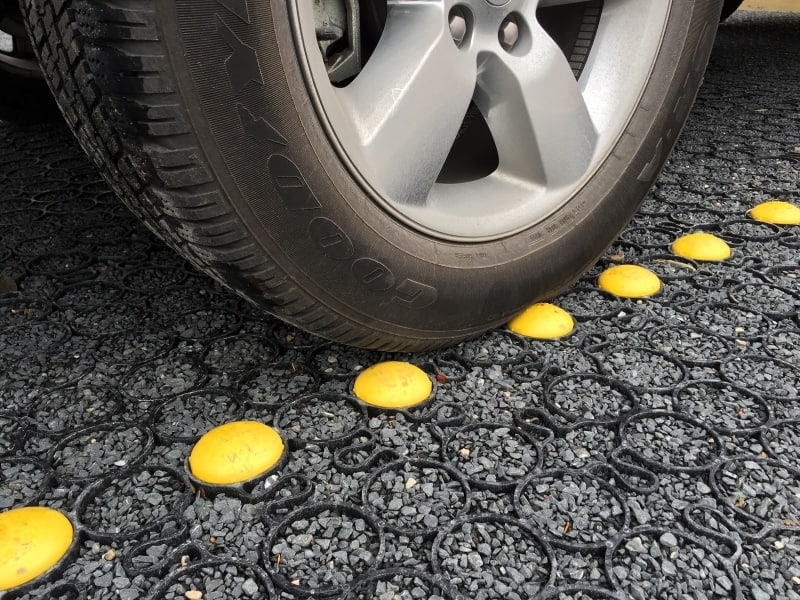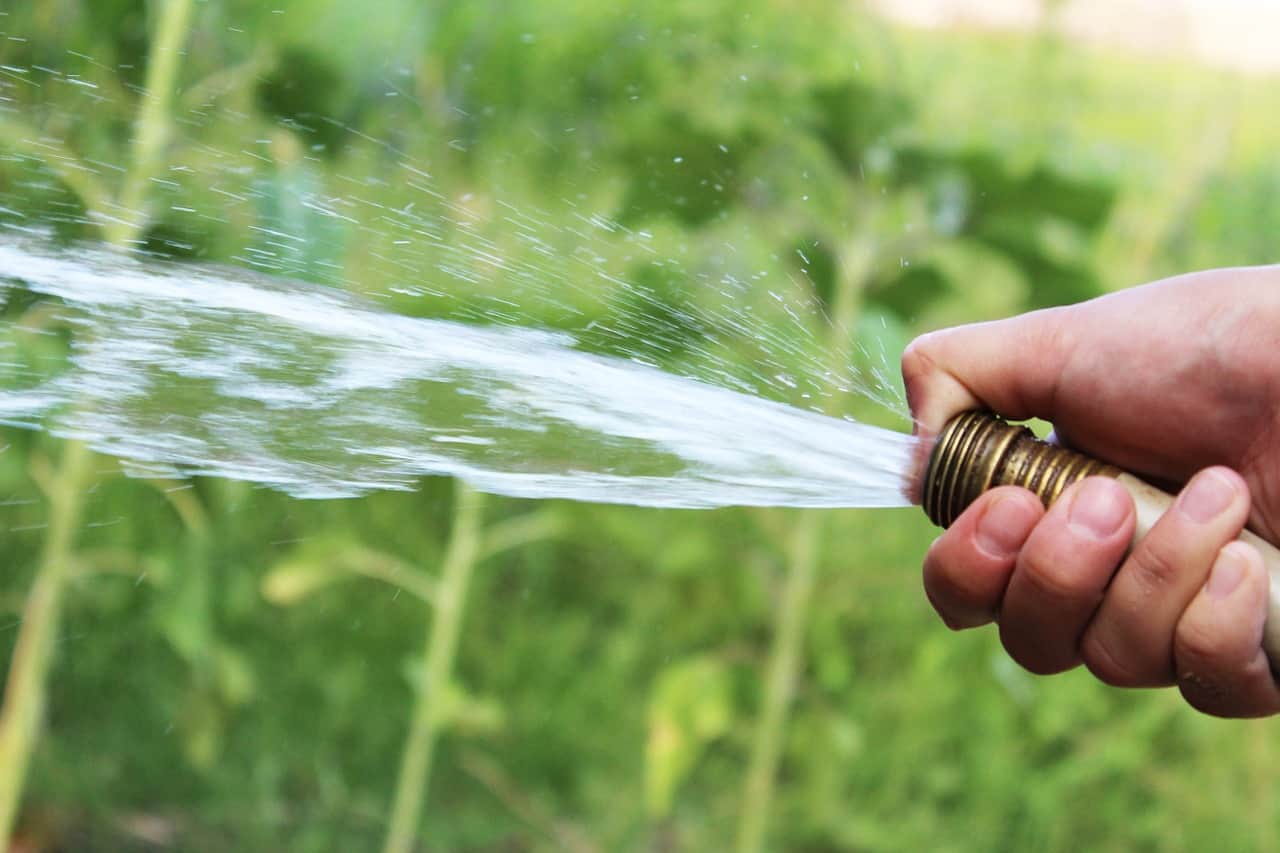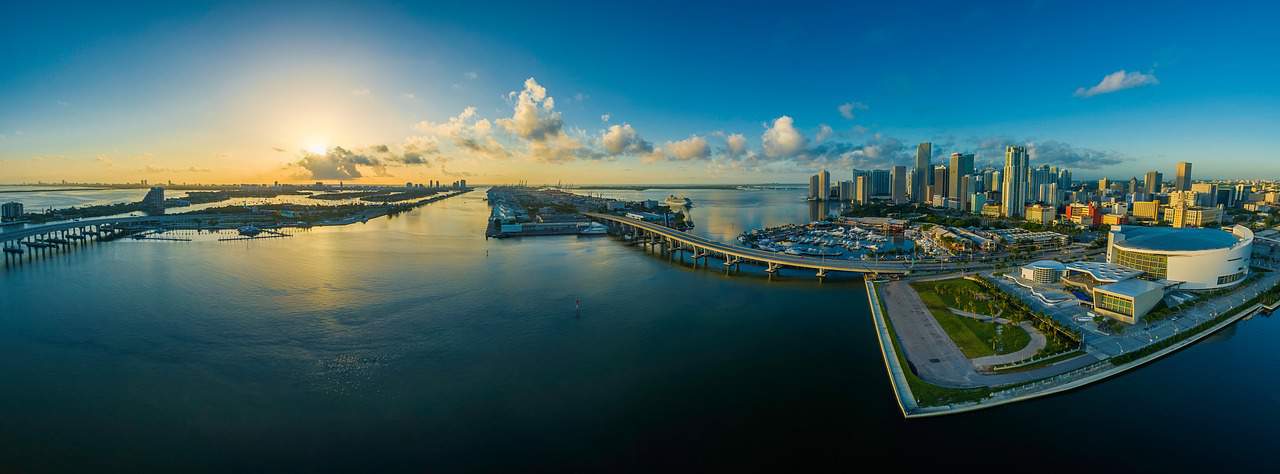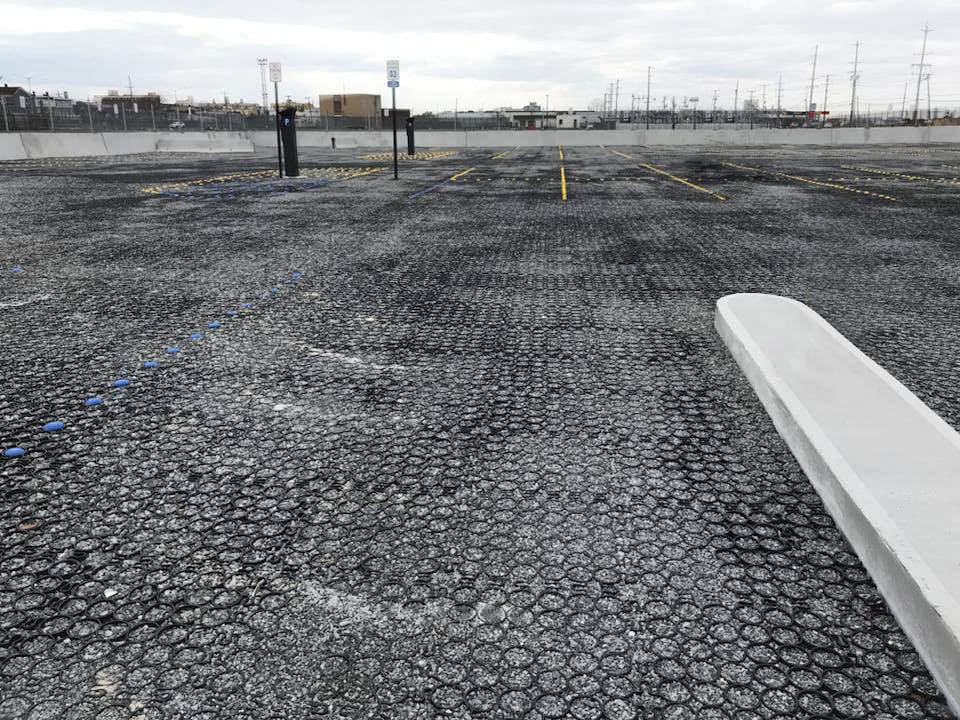Are You Being Taxed For Impervious Surfaces On Your Property?
Taxes on impervious surfaces can come in many shapes and forms. Whether it’s called rain tax, drainage fee, stormwater fee or impervious tax, this fee is generally dependent on the surface area of impervious cover that is present on site.
Are Impervious Surfaces Taxed?: Learn to Save More Money
Impervious Surfaces Does More Harm Than Good
 As to why taxes are placed on impervious cover, there needs to be a closer look at how impervious cover affects the environment and community.
As to why taxes are placed on impervious cover, there needs to be a closer look at how impervious cover affects the environment and community.
- Impervious Cover Creates Runoff: Natural water absorption is prohibited when an impermeable surface is present, which acts as a barrier. Water is forced to flow out into the closest drainage system and discharged to far away locations where it is treated.
- Depletes Groundwater Recharge: Since water is unable to absorb into the ground and is transported far away from its original source, groundwater recharge is depleted. This can become more severe in urban areas where impervious cover is more accumulative. Because groundwater recharge is depleted, local aquifers are running low and this poses serious problems, such as sinking land and loss of crops. Therefore,the need for water conservation is on the rise.
- Creates Pollution: Impervious surfaces such as concrete and asphalt are manufactured materials that require the burning and use of fossil fuels. The production and transportation of this material also uses fossil fuels, which emit carbon dioxide and other gases into the atmosphere. This fast emission of gases overwhelms the levels present in the atmosphere causing tears in the ozone layer and trapped heat, which both contribute to global warming and other environmentally damaging effects.
- Spreads Pollution: As mentioned before, water is unable to naturally absorb into the ground and instead runs off impermeable surfaces into drainage systems. On its way to these systems, water picks up pollutants and contaminants that have accumulated on concrete and asphalt, such as car fluids, pesticides, fertilizers and animal waste. Although stormwater runoff is sent to treatment plants to be treated before becoming drinkable, stormwater drainage systems can be easily overwhelmed during extreme weather causing polluted water to flow into local bodies of water that contaminate safe, drinkable groundwater.
It is evident that impervious cover causes more harm than good. Ensuring the environment is protected is of dire importance to a community and city to maintain natural resources and natural aesthetics.
Where is Your Money Going?
Taxes are implemented by the government and smaller governing bodies to source funding for numerous of resources made available by the government. Some of these resources include building streets and freeways for a better infrastructure. Other resources include departments, such as the department of transportation, and their employees to maintain licensing and other regulations in place. Each state, city and county differs in how, why and what they collect for taxes.
Specifically, the impervious cover tax is levied for these reasons:
- More Pervious Cover: The tax is intended to discourage more impervious cover since impermeable surfaces tend to create and spread stormwater runoff and pollution. Densely developed cities in particular prefer pervious cover as a low impact development construction practice to reduce the burden on infrastructure and stormwater management systems.
- Improve Infrastructure: The city is in charge of maintaining communities and quality of life to preserve a healthy city. Depending on the city’s funding distribution, taxes are implemented and funding can go to numerous efforts to maintain a good community. In an effort to promote pervious cover, impervious cover taxes on newly developed property such as hardscaped parking lots are usually distributed to fund improvements of infrastructure and/or stormwater management systems that have aged, weakened or need added capacity.
- Create Mindful Development: Urban cities today are embracing natural aesthetics for many reasons. Tourists and their tourist dollars travel to the most innovative, green and livable cities, boosting local economy. Incoming tourism could also potentially draw new residents. A city that embraces sustainability, natural scenery and environmentally sound new development is an attractive destination to either visit or live.
Here’s How Houstonians Pay Their Taxes
In 2010, the drainage utility fee was put into effect to fund a pay-as-you-go program to renovate Houston’s streets, stormwater management systems, and infrastructure. The fee was based on the amount of surface area of impervious cover due to its presence causing a rise in stormwater runoff. The city aims to encourage the use of pervious cover since the city has suffered extreme flooding that has damaged properties and risked people’s safety.
- For residential properties with an impervious surface area of 15,000 square feet, the annual drainage utility charge would be $40. Although small, taxes can easily add up and cutting costs would make a significant impact on a family’s income.
- For non-resident properties with an impervious surface area of 15,000 square feet, the annual drainage utility charge would be $480. Small, medium and large business could benefit from saving as much as possible in taxes to be able to operate their business.
Start Saving Money, Now
Although these taxes are generally going towards improving the community, the amount of taxes you pay every year can be overwhelming on you and your business. Being able to cut down on taxes is everyone’s goal.
Here’s how:
Add or Replace Impervious Surfaces with Permeable Pavers in These Applications
-

- Grass Driveways: Some homeowners want a driveway but also maintain the natural vegetation. So how can they make their cake and eat it too? They opt for grass driveways made from plastic, permeable pavers that allow water to filter through that create a stable ground for vehicle parking and also maintain and protect grass to keep the natural greenery.
- Patios: Backyards are the best places to hang out on a bright, sunny day. Building the best patio for fun and games is necessary for any family. They are great for stable ground to place outdoor furniture and protect feet from rocks and such but patios tend to be impermeable if made with concrete. Instead create patios, even pool skirts and hot tub pads, that are permeable and puddle-free for any excessive splashing.
- Parking Lots: Parking lots take up a lot of surface area but are needed to offer stable ground for parking and heavy traffic. Fortunately, some pervious surfaces are just as durable and can even be easier and cheaper to install. Commercial developers will benefit from having a permeable parking lot in the short and long run. Save on construction costs and create parking that is permeable.
- Grass Parking: Lawn parking is common at parks, fairgrounds, drive-in theaters and other outdoor events. Driving cars across grass, especially when wet, causes mudding, rutting and erosion. Use plastic, permeable pavers to create grass-covered parking to stabilize the ground and prevent damage while still enjoying the natural aesthetic.
- Pathways & Sidewalks: Although pathways and sidewalks are small in comparison to parking lots, using impermeable surfaces for these applications can still cause a negative impact. Using permeable surfaces can aid in natural water absorption and maintain the natural vegetation. National parks are well-known for maintaining the natural environment but also giving visitors easy access to enjoy the scenery. That’s why they tend to opt for permeable pavers to have the best of both worlds.
Build Towards the Sky
-
- Depending on the definition of what is exactly being taxed, some of these taxes are calculated depending on the surface area of impervious cover on site. Building vertically up requires less surface area of pavement. With less surface area of pavement, any remaining and necessary pavement can be built with permeable surfaces to save even more.
Added Perks of Pervious Cover

- Natural Water Absorption: With the presence of pervious cover, your property is now part of the groundwater recharge system! Water can now naturally absorb into the ground to be filtered and deposited in pockets of water, such as aquifers. Local water sources can be replenished and there is no need to waste time and money drilling new wells in desperate search for groundwater.
- Filtration of Pollutants: There is a process before contaminated water becomes drinkable groundwater that is both miraculous and absolutely essential. As soon as water hits natural ground it starts to permeate through. As it trickles down, soil and rocks act as a catch-all for any particles in the water that are foreign. Eventually, it settles in underground pockets called aquifers until it is pumped up through a well.
- Made from Recycled Material: Permeable pavement and surfaces are in themselves eco-friendly but some are also made from recycled material. Choosing to create products with recycled materials is another way to positively impact the environment. The average American throws away 185 pounds of plastic per year. In Los Angeles alone, 10 metric tons of plastic fragments are swept into the Pacific Ocean every day. Being able to prevent plastic from invading our environment and slowly rotting away (100+ years) in landfills by recycling is dire.
- Minimize Transportation Costs and Consequences: Another way to be eco-friendly is to cut the amount of air pollution caused by emissions from the burning of fossil fuels. Transporting materials needed to produce impermeable pavement such as concrete and asphalt requires long-distance transportation. Raw materials are brought from far distances to production facilities and then transported to job sites elsewhere. Because these materials are incredibly heavy, the amount of energy used for transportation is alarmingly high and the rate of pollution released is multiplied. Lightweight pervious surfaces, such as permeable pavers, require little energy and small costs to transport.
- Help Control Erosion: Surprisingly, soil management is important when it comes to erosion control. The topsoil that is rich in nutrients and covers vegetation can be easily washed away during heavy rainfall. When this layer is removed, only soil that has few nutrients is left behind causing vegetation to starve and die off. The roots of vegetation hold together layers of soil so when they begin to die off, the soil around begins to displace. Another disadvantage of losing that important topsoil is the need to use more fertilizers to mitigate the lack of nutrients available in the present soil. These fertilizers are then vulnerable to being washed away by stormwater, potentially contaminating local bodies of water.
Need Help Adding More Pervious Cover?
- Reach Out To Your Community
-
- Find Facebook Groups.
- Ask Your Neighbors.
- Visit Local Green Building Resources Centers.
-
- Research, Research, Research
-
- Read accredited blogs and articles regarding eco-friendly development.
- Go to the library and check out some books regarding low impact development and sustainable alternatives.
- Reach out to experts in green building, such as engineers and architects, in your community.
-
- Lastly, Don’t Be Afraid and Just Get Started
- Although this may be a new venture for you, don’t be afraid to think outside of the box to build green and efficient developments. Your small changes will make big impacts on you, your community and the environment.
Understand what goes on behind the scenes with these facts before you start watering your yard during those hot summer days.
- Of the 37 major aquifers around the world, 21 aquifers have entered into the “negative zone”, which means they are losing more water than they can replace.
- U.S. aquifer, Ogallala, makes possible about one-fifth of the country’s corn, wheat and cattle and is currently at risk as more and more wells are drying up.
- California went through more than 5 years of drought that was declared a state of emergency in 2014. Water use was severely cut back due to a series of executive orders in an effort to conserve.
- As of April 2017, 10.3 million people in California are still affected by the drought.
- In the world today, one billion people in under-developed countries have no access to clean, safe drinking water.
Take Matters Into Your Own Hands With Low Water Landscaping

So, why is this method of landscaping beneficial?
Low water landscaping can:
- Reduce outdoor water use
- Significantly reduce water bills
- Save tens of thousands of gallons of water per year
- Eliminate the use of fertilizers and other pollutants
- Reduce or eliminate the use of lawn mowers, which emit pollutants
- Increase property value
- Help homeowners conserve water in drought-prone areas where legislation limits water use
- Significantly reduce lawn care maintenance
Plant Ahead

Before beginning, plan out how you want to create the ideal low water landscaping system.
- Choose Native Plants: Plants that are adapted to the soil and climate conditions of your region require little water or more than normal rainfall. Also, they generally don’t require fertilizer. They are fit to fight against pests and disease than other species in that same region making them resilient and easy to care. To find out what are the native plants in your region, visit local nurseries or gardens to discover what is best suited for you and your home. Do online research and use online databases, such as this one, to thoroughly research plants before investing in them.
- Limit the size of your plants: It’s safe to say that the bigger something is, the more care it needs. Therefore, a bigger plant needs more water. Avoid planting shrubs that are prone to grow big and past your own limitations of care. Hit the books or search the web for information on how tall and wide mature shrubs will grow. Further, a crowd requires more care than a smaller group so avoid overcrowding plants. Follow the planting instructions and understand that plants and flowers that look sparse will eventually fill the area in time as they grow.
- Find out what is your soil composition: In one area, soil can drastically differ. Plants require different variations of soil. Understanding your plant, the type of soil it needs and the soil composition of your yard can dramatically influence how your landscape thrives.
- Group plants based on their needs: Hydrozoning is a technique where plants are grouped depending on the similarity of their watering needs. This protects the plants from under and over watering and reduces water use by ensuring you utilize the appropriate amount of water. No little, no less.
Richard Callahan a Truegrid installer and owner of El Paso Artificial Grass & Turf says, “Your goal is get your plants to the point where minimal watering is needed, however for newer plants they need more time and water in order for them to take root. Also, you have to consider other factors such as the weather conditions as they may slow down root development.”
Design with Efficiency

- Establish practical turf in strategic areas
- Turfgrass requires more water than most plants due to its variety. They generally receive the highest percentage of irrigation. Because of this, water usage is high. Aim to use native grass or at least low water-using turfgrass and strategically place it in practical areas, such as a play area.
- Mulch to reduce water loss
- Mulch is great for water conservation and is useful in cutting down on water-hogging weeds. Pine needles, bark chips and compost are found naturally in mulch. If you’re on a budget, keep your grass clippings and leaves from mowing or raking and spread it on your garden. When these materials break down they add nutrients into the soil enriching your plants.
- Minimize steep slopes
- When there are slopes present, there is potential for erosion and runoff to occur. If possible, try to level your ground before planting any shrubs or flowers. Water will more likely soak into the ground nourishing your vegetation rather than flowing into a nearby stormwater drain.
- Make paths and pavement pervious
- Pervious, or porous, gardens paths and driveways let rainwater drain into the ground, instead of flowing into the street, where it can nourish plant roots. Risk of erosion or spread of contaminants is also reduced when water is allowed to filter into the ground.
- There are various ways to make pervious paths. Design paths made with loose gravel, plastic grid permeable pavers with grass or gravel fill, or spaced bricks. To be one step ahead of pesky weeds, lay down geofabric before laying down any pavers to keep them at bay.
Forget the Lawn Altogether

If you absolutely must have some long blades of grass somewhere, choose drought-resistant varieties of grass that require less watering.
In times of weakness, always remember this
- The average American family uses more than 300 gallons of water per day with 70 percent of that being used outdoors.
- You can reduce amount of water used by about 50 percent by just creating a low water landscaping design.
- Lower water levels can contribute to higher concentrations of natural and human pollutants. Using water more efficiently helps maintain supplies at safe levels, protecting human health and the environment.
- Making small, everyday changes leads to significant, big change and impact across the community and world.
During the construction of large buildings and development, the environment is damaged and disrupted. The flow of water is affected, vegetation is ripped out and communities of animals are forced out. In an effort to cut down on the environmental devastation, low impact development techniques are used as a solution.
Low impact development, LID, can be summed up as an array of practices that “mimic or preserve natural drainage processes to manage stormwater”. These LID practices aim to hold runoff water and influence it to flow back into the ground instead of flowing into ditches, drains, or detention ponds. Issues with flooding and pollution arise when runoff water has nowhere to go and becomes contaminated.
To avoid the severity of these issues, many developers, city professionals, builders and etc. are using these techniques to build with more consideration to how their project could affect the area.
The Benefits are as Clear as Day
With LID design, developments are built with more attention to the potential environmental impact they may have. These LID practices aim to work with natural processes while you gain the following benefits.

Our access to safe and drinkable water is easily threatened when the flow of runoff water isn’t properly handled.
The presence of impervious surfaces, such as concrete and asphalt, prevents water from naturally filtering into the ground. Instead, runoff water glides across surfaces where contaminants and pollutants such as pesticides, chemicals, leaked car fluids, and animal waste have accumulated over a length of time,. Water then flows until it finds a place to settle, namely man-made areas of detention, natural bodies of water or surfaces that are permeable.
Impervious surfaces thereby increase the risk of water contamination.
To combat this, stormwater management systems are designed to capture and treat this water. Although this does work temporarily, runoff water may overwhelm the system and cause severe flooding when there is severe weather.

We already know that impermeable surfaces create more runoff water. When there is an overwhelming amount of downpour, flooding is exaggerated in areas where water cannot soak back into the ground.
Damage done by flooding can be costly and harmful. Homes and properties are lost, wastewater systems are overwhelmed and during extreme events, even lives can be threatened or lost. Taking measures to prevent the severity of these flooding events can save time, money and possibly even lives. Property damage is costly and taking preventative measures can reduce those costs.
Not only does this matter to you but this is one of the biggest concerns city officials have when there is new development.Therefore, low impact developments and pervious cover are heavily encouraged to combat the issues.

Adding impermeable surfaces such as concrete and asphalt can trap heat in urban areas where these materials are more prominent. These surfaces tend to absorb the heat of the sun’s rays and release of this heat is slow. Usually, vegetation and soil helps cool down areas during their natural processes but with less vegetation and more heat-trapping materials, temperatures rise fast.
Because of these higher temperatures, you are forced to use more air conditioning, which raise your energy costs.
Energy is also used when water flows into stormwater management systems that lead to wastewater plants. In these treatment plants, runoff water is treated before being re-introduced as drinkable water. To create and use energy, fossil fuels must be burned, which emits pollutants in the air.
LID practices enable water to filter back into the ground reducing that amount of water need to be treated at wastewater treatment plants. Energy is then conserved.
4. Enhance Neighborhood Aesthetic
It is not a new concept that vegetation is visually pleasing.
Some cities are choosing to maintain and add more greenery to their community to create a more inviting environment. It’s no surprise, especially since materials like concrete are unsightly and dull.
The LID Techniques You Must Know About
Now that you’ve learned why these techniques are beneficial, it’s time to discover some of the clever and intricate solutions LID practices offer. The following examples are some of the most common ways to create low impact development projects.
- Bioretention – Bioretention systems use the biological, physical and chemical processes of plants, soil, organic matter and mulch to hold and treat stormwater. At first glance, they look like natural landscape. However, their layered system underneath is what makes them special.
- Permeable Pavers – Similar to bioretention in how it works, this unique practice is an alternative to pavement. Traditional pavement, such as concrete and asphalt, are normally impervious and does not allow water to filter back into the ground. Permeable pavers do the opposite. They install an open cell system where water is able to naturally filter back into the ground to recharge. Some of these systems also have a layered retention and detention area below to slow stormwater runoff above ground.

- Green Roofs – Also known as eco-roofs, green roofs help mitigate the effects of development as soon as rainwater lands on top of the building. These layered systems aid in the filtration, absorption and detention of water to maintain good water quality. Similar in structure as a bioretention, these structures work to detain and filter water with a strong barrier between the structure and building to prevent water damage. Typically, development destroys vegetation but green roofing protects that vegetation. Instead, it uses vegetation to naturally filter water while using space available above buildings.
- Rain Barrels and Cisterns – Rain barrels are a low-cost and easy to maintain option available for any residential, commercial and industrial location. This barrel-sized device aids in the retention and detention of water to help manage rooftop runoff. Cisterns are larger than rain barrels and are installed on the roofs of buildings by catching rainwater and retaining it in above- or underground storage tanks. Water is stored and can be used later to help conserve the use of water reducing the cost of water utilities.
- Soil Amendments – Before the construction of any building, the soil in the area must be prepared for the best stability. Vegetation and topsoil is cleared out, the remaining soil is compacted and the area around the new building is seeded or sodded. Because of this, the present soil loses its ability to allow water to filter back into the ground causing more runoff. Because plants have less available water, building owners must work harder to maintain the landscape by irrigating more and using fertilizers. Soil amendment does just what it’s named for. It amends the soil by bringing back what it has lost, such as compost as organic matter, minerals and topsoil to restore the area’s soil.
- Tree Box Filters – These filters are basically mini bioretention systems installed beneath a tree and can be effective when established across an entire area.
Make a Big Impact with Low Impact

If you haven’t already, dig into the perks of LID. Whether you are in the construction phase or your development is complete, these LID practices can be easily integrated into your project.
It’s never too late to make a great impact in your community.
At TRUEGRID, we specialize in a paving alternative that is easy to install and great for low impact development initiatives. See what others are doing and how they are using TRUEGRID in their projects to create LID designs.
Gain inspiration for your development.

Two new routes at the NYC Ferry have been opened one month ahead of schedule. The mayor, other city officials and fellow New Yorkers rejoiced with a celebratory opening ceremony as the Mayor Bill de Blasio announced “a new era begins in New York City.”
The new ferry system, which includes the Rockaway and East River routes, hopes to ease commuting for New Yorkers and heavy congestion of vehicle traffic on roads and foot traffic in the subway system.
In an effort to offset the environmental impact the ferry could potentially have, sustainable alternatives for pavement were considered. TRUEGRID was chosen to create a permeable parking lot for stormwater management, low-to-no maintenance pavement.
Price for a ride on the ferry is $2.75, just as much as the subway and bus rates.

Benefits from utilizing a TRUEGRID parking lot:
- Stormwater Management – Impermeable surfaces, such as concrete and asphalt, don’t allow water to filter back into the ground causing runoff or flooding. Permeable pavers do the opposite. This open cell design filters water through the grid system, strategically built with compacted gravel and industrial strength plastic grids,
- Underground Detention – Because of its unique permeable properties, runoff water can be lead into an underground deteniton made from compacted rock that also providfes a stable foundation.
- Low-to-No Maintenance – Concrete and asphalt tends to crack or create potholes over time due to external factors. Some external factors can include extreme heat or cold, heavy load traffic and weather conditions over time. Because of its patented design, permeable plastic pavers are made to be durable but flexible to adapt to any small changes.
- Easy to Install – Permeable pavers are modular and easily interlock to create custom sized and shaped pavement projects.
- Puddle-, Rut- and Mud-Free – Due to the permeability benefits of pavers, water is unable to accumulate in puddles that create ruts and mud. The pavement and surrounding area is safe from unstable ground.



